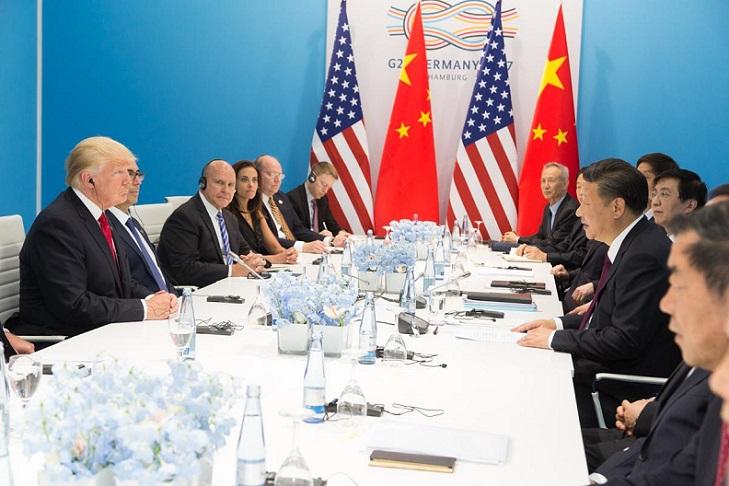
Tariffs: How Do They Work, and Who Pays Them?
It’s hard to avoid seeing news about the ongoing US-China trade conflict. It began in 2017, with the US investigating Chinese trade policies, followed up with tariffs on solar panel materials and washing machines, and expanding to tariffs on steel and aluminum. The US has set a tariff on $250 billion in Chinese goods. China, for its part, has applied tariffs to $110 billion of American goods.
In light of this turmoil, we thought we’d take a step back and examine exactly how tariffs work, who pays them, and how trade disputes like this have played out in the past.
HOW DO TARIFFS WORK?
Tariffs work by taxing imports. This is done for two primary reasons: to raise revenue for the government or to protect domestic industries. The current tariffs are to protect US industry.
Let’s say you have a market for widgets. There are domestic suppliers of widgets, and there is a world market for widgets. Because widgets are a global commodity, the price for widgets is set at $100. So, any widget producers who can make widgets for less than $100 domestically will be able to participate in that market. Any domestic widget maker who can’t produce at that cost is shut out of the market, because there’s no reason for a consumer to spend more than $100 on widgets, and there is a plentiful international supply.
Now let’s add a $50 per widget tariff. This means that foreign widgets now cost $150 when purchased in the US. This means that more domestic widget makers can participate in the market, as anyone who produced widgets from $100 to $150 can now sell their products profitably. Any widget maker whose cost to produce is higher than $150 still won’t be able to participate in the market. Also, fewer widgets will be sold overall, due to basic supply and demand. As the price of a good increases, there are fewer people willing to purchase it at that price, causing overall consumption to decrease.
WHO WINS AND WHO LOSES WHEN A TARIFF IS IMPLEMENTED?
Well, domestic producers win, because they’re able to sell more of their goods in the market at a higher price. The World Supply producers sell less of their goods at a higher price, so they may win or lose depending on the specific circumstances of the individual tariff. Consumers lose, because they buy fewer goods overall, at higher prices. The government implementing the tariff wins, as it gets an increase in revenue from the tariff. And, to an extent, society loses due to the loss of overall economic activity known as “deadweight loss.”
WHO PAYS FOR TARIFFS?
When the US government implements a tariff, it is paid for by the US people. So says Howard Gleckman, a senior fellow at the Urban Institute-Brookings Institution Tax Policy Center. "If the U.S. imposes a tariff on Chinese televisions, the duty is paid to U.S. Customs and Border Protection at the border by a U.S. broker representing a U.S. importer, Costco for example. The Chinese government pays nothing."
Do end consumers see prices rise? This can vary depending on the size of the tariff. When tariffs are small, many importers will absorb the cost of the tariff rather than raise prices on consumers. When tariffs are on the order of 25%, as they are today, there’s very little chance importers can absorb this cost.
“There will be price hikes at Target, Costco, Home Depot and Walmart,” said Nelson Dong, a partner with Dorsey & Whitney in Seattle. “The importers are going to pass on some or all of the tariff to the consumer.”
The stock market has taken this all in stride, dipping slightly at the announcement of the new tariffs, but quickly bouncing back and trading higher.
On the flip side, American producers are hurting as a result of the retaliatory tariffs China has put on American goods. Already, American farmers are seeing orders cancelled for pork, and soybean farmers worry that tariffs could shut down the industry for good. President Trump has proposed $30 billion of aid to go to the farmers feeling the negative effects of the trade war.
HOW HAVE TARIFFS WORKED IN THE PAST?
Historically, the US government has relied heavily on tariffs for funding, with tariffs providing funds for as much as 95% of the government before an income tax was passed. They were viewed favorably in the North, which wanted to protect its nascent industries, and disliked in the South, which imported a significant amount of goods from Europe.
America’s last trade war started in the wake of the Stock Market Crash in 1929, when President Hoover signed the Smoot-Hawley Act into law. Designed to be a protectionist tariff for American farmers, it precipitated retaliatory tariffs from Canada and Europe. Trade between nations ground to a halt, and economists widely believe that this exacerbated the economic turmoil of the 1930s, giving rise to extremist ideologies in Europe and intensifying the Great Depression.
We’ll wait and see the outcome of the current trade conflict.
Interested in learning more about tariffs and other financial topics?

